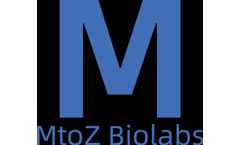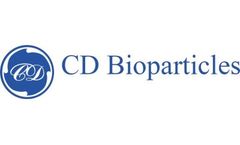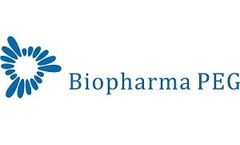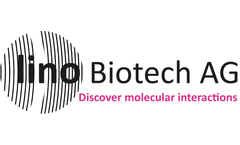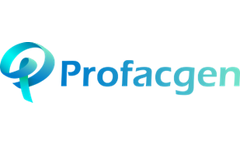Cancer Antigen Articles & Analysis: Older
26 articles found
Committed to pushing the boundaries of cancer research, Alfa Cytology collaborates closely with the scientific community, constantly exploring new diagnostic and therapeutic frontiers. ...
To grasp how cancer vaccines work, it is pivotal to understand two fundamental components of the immune system: antigens and antibodies. ...
Ensure Specificity and TargetingThe main advantage of ADC lies in its high specificity for specific cancer cell surface antigens. Biological activity analysis can verify whether ADC can accurately identify and bind to target antigens. ...
Kate Sasser from Tempus led a discussion on the potential of antibody-drug conjugates (ADCs), their challenges in targeting tumor antigens, and the future of cancer treatment with Dr. Daniel Johnson, Dr. ...
ByTempus
Poly(lactic-co-glycolic acid) (PLGA) is a functional polymer organic compound randomly polymerized by lactic acid (PLA) and glycolic acid (PGA). It has been approved by the U.S. Food and Drug Administration It is certified by the Food and Drug Administration (FDA) and is a copolymer material available on the market. PLGA has good biocompatibility, biodegradability, mechanical strength, good ...
Nanobodies are the smallest functional single-domain antibodies known to be able to stably bind to antigens, and have unique structural and functional advantages. The molecular weight of nanobodies is only 12-15 kDa, which retains the antigen binding ability of traditional antibodies. ...
Oncolytic Viruses are wrought using an array of techniques, each technique contingent on the virus strain and the cancer form it targets. It is essential to curate a virus capable of adeptly identifying and effacing cancer cells. ...
Antibody-drug conjugates (ADCs), as emerging anticancer drugs, can deliver highly cytotoxic molecules directly to cancer cells to kill them. ADC is a monoclonal antibody covalently bound to cytotoxic chemical substances (payload) through linker. ...
Considering that targets play a key role in delivering drugs to cancer cells, it is important to develop new targets or ADCs to expand new indications and gain a larger market space. ...
Antibodies are the precise guidance components of ADCs. In theory, molecules that bring effector molecules to the surface of tumor cells can play the role of antibody guidance The choice of antibody for ADC drugs depends on the target of the disease. Targets can be divided into tumor-specific antigens (TSA) and tumor-associated antigens (TAA) according to their expression. Antigens that are only ...
Notwithstanding constantly changing convictions on ideal cancer therapies, there is a consensus that fighting cancer requires aggressive therapies. ...
In recent years, ADC has made rapid progress in the treatment of metastatic castration-resistant prostate cancer (mCRPC). STEAP1, TROP2, PSMA, CD46, and B7-H3 are currently being looked at as optimal antigens, which have been shown to be targeted by ADCs. 1. ...
Role of mesothelin in cancer and signaling Mesothelin is expressed in many solid tumors, most commonly in mesothelioma, epithelial ovarian, and pancreatic cancers, as well as in lung and uterine malignancies and bile duct cancer. ...
Circular RNAs are closed-loop single-stranded RNA (ssRNA) that are structurally specific, and produced by the back-splicing process. CircRNAs can exist independently of proteins and are unaffected by exonucleases, and are widely found in plant and animal cells to regulate gene expression. Circular RNAs were first discovered by Sanger studying virus-like RNAs. And in 1991, Nigro stumbled upon an ...
Chimeric antigen receptor T cells (CAR-T) and T cell antigen receptor chimeric T cells (TCR-T) are currently the "top stream" in adoptive T cell tumor immunotherapy. ...
SVN is widely recognized as a tumor-associated antigen (TAA) and has become an important target for cancer diagnosis and treatment. ...
Adoptive cell transfer (ACT) therapy is one of the most effective therapeutic options for tumor immunotherapy that is currently emerging in clusters. Chimeric antigen receptors (CARs) and engineered T cell receptors (TCRs) are the main adoptive immunotherapies in recent years. TCR-engineered T cells express tumor antigen-specific receptors with alpha and beta chains generated from high-quality, ...
The researchers expose us to a radically different way of thinking in this article: instead of working on T cells, they focus on changing cancer cell antigens. They employed antibodies to deliver viral antigens to the tumor location and trigger virus-specific T lymphocytes to target cancer cells, destroying them. ...
Some patients with multiple myeloma often relapse due to the emergence of immune escape mutations, which makes cancer cells in the body resistant to therapy; therefore, researchers urgently need a new target antigen to develop a multi-targeted method, so as to avoid immune escape and avoid disease recurrence. In previous studies, researchers focused on ...
Novel cytotoxic drugs New cytotoxic drugs have been developed to target cancer cells with low antigen expression or resistance to auristatins or maytansinoids. ...


